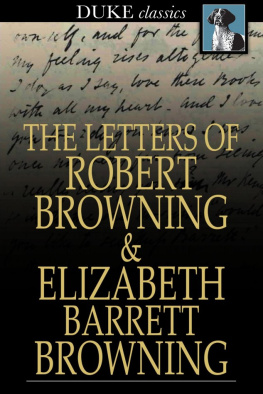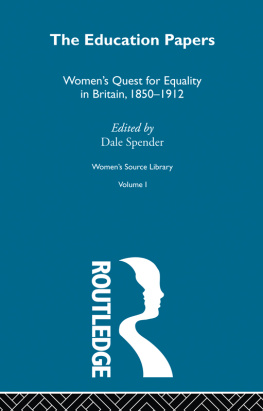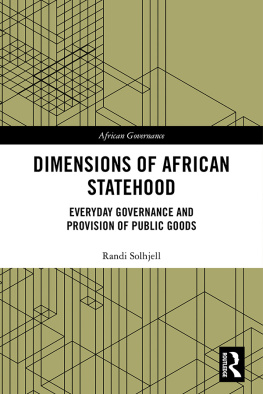New Mexicos Quest for Statehood
1846-1912
New Mexicos
Quest for Statehood
1846-1912
ROBERT W. LARSON
1968 by the University of New Mexico Press
All rights reserved. Published 1968
Printed in the United States of America
First paperbound printing, 2013
Paperbound ISBN: 978-0-8263-2946-2
Electronic ISBN: 978-0-8263-2947-9
17 16 15 14 13 1 2 3 4 5
Library of Congress Card Catalog No. 68-23022
For Carole
Preface
A STUDY OF THE MOVEMENT in New Mexico to achieve statehood is a particularly challenging one, because, of all the contiguous territories of the Union, New Mexico remained a territory the longest. To locate information dealing with this prolonged effort, which spanned parts of two centuries, libraries and archives were searched in Santa Fe, Albuquerque, Washington, Denver, and elsewhere. The material, including personal correspondence, newspapers, and public and private documents, was relatively plentiful, especially for the years just prior to President Tafts proclamation of 1912 making New Mexico a state.
The number of people and institutions I am indebted to is very large. To the late Dr. Frank D. Reeve of the University of New Mexico, I owe the initial inspiration to take the entire movement as my project. Dr. Myra Ellen Jenkins, the senior archivist at the State Records Center and Archives in Santa Fe, gave invaluable help, and showed unfaltering interest in my study and complete attentiveness to my many questions and requests. At the National Archives, Mr. Buford Rowland, in charge of the congressional bills and reports, was most considerate, as were the archivists in charge of documents in the Department of State, Department of Interior, and Department of Defense. Dr. John Porter Bloom, editor of the Territorial Papers, kindly helped me locate a rare and important document. To the librarians at the Division of Manuscripts of the Library of Congress I also owe a great debt.
Other people who assisted me in my research were the librarians in charge of the Special Collections Division of the University of New Mexico library, and Dr. J. William Hess, associate curator of the West Virginia Collection in the University of West Virginia library, who was most kind in locating for me pertinent correspondence in the Stephen B. Elkins Papers. Many librarians at the Colorado State College library at Greeley were helpful to me, especially Miss Carol L. Koehmstedt, Mrs. Virginia S. Costello, Mrs. Marjorie M. Johnson, Mr. Gabor Kovacs, Mr. James B. Greer, and Mr. Daniel A. Seager, the head librarian.
Advice and constructive suggestions were offered to me by Dr. Ben Sacks from Baltimore. Mrs. Jacquelyn Kay Otero helped me to translate difficult Spanish documents, and Dean Forrest W. Frease and Professor Marcia I. Willcoxon of Colorado State College were willing consultants on matters of punctuation and style. Mrs. Mary Krape, my typist, was always co-operative and very careful to avoid error. To Mrs. Winifred W. Gregory, my manuscript editor, of the University of New Mexico Press, I am especially indebted for suggestions on how to improve the manuscript. Dr. France V. Scholes, professor emeritus of the University of New Mexico, has my deep gratitude for his guidance on many scholarly matters.
Among the institutions that made this study possible was the American Philosophical Society, through which I received two generous grants enabling me to do research at Santa Fe and at Washington in 1963 and 1964. I am also grateful for the interest shown by many of my colleagues, my family, and old friends and faculty members at the University of New Mexico.
The greatest debt I owe, however, is to my wife, Carole, whose dedicated help in editing the first draft was an integral and essential part of the work. She shared from the beginning the vision of what I proposed to do in chronicling the long history of the New Mexico statehood movement.
Robert W. Larson
Contents
ONE
Conquest & Military Rule
IT WAS MID-AUGUST, 1846, when Brigadier General Stephen Watts Kearny led his confident American forces into the ancient capital of Santa Fe, bringing an old era to an end and inaugurating a new one. Since 1610, Santa Fe had been the center of a Spanish civilization established in the Southwestern wilderness and imposed upon Indian cultures ranging from primitive nomadic tribes to more sedentary Pueblos. Kearnys conquest brought a dramatic change, far more drastic than the one that had occurred as a result of Mexican independence. For now the energetic, aggressive Anglo-American civilization would be grafted on the aged and somewhat lethargic Spanish and Indian ones.
The Mexican War unofficially began on April 25, 1846, when a Mexican force of 1,600 men attacked some sixty-three American dragoons in the disputed area between the Rio Grande and Nueces rivers. In the encounter there were American casualties and Americans taken prisoner, so that when the alarming news reached Washington on May 9, the expansion-minded president, James Knox Polk, could deliver a war message with all the indignation of a victim of wanton aggression. In actuality, however, Polk in consultation with his cabinet had already decided to go to war.
Relations between the two countries had been deteriorating for several years. The instability of the Mexican government had resulted in loss of American property in the troubled country amounting to $8,000,000. The annexation of Texas was bitterly resented in Mexico City. Then there was the rejection of the Slidell mission on December 20, 1845. The Mexican government, sensing an overpowering desire on the part of its expanding northern neighbor to acquire by purchase much of Mexicos northern domain, refused to discuss with John Slidell, the special presidential envoy, any question except the annexation of Texas, which was already regarded as a closed matter by the United States. Polk followed up this famous rebuff by dispatching a force under the command of General Zachary Taylor to the Rio Grande. Taylor not only occupied territory claimed by Mexico but blockaded the river so as to prevent supplies from reaching the Mexican town of Matamoros on the other side. Polk apparently had hoped for a quick Mexican response to this move, but when the weeks passed without a skirmish he decided to launch a war which would, in effect, acquire those vast Mexican holdings we wished to purchase. The clash in April only added righteousness to the cause.
The response to Polks war message was decisive. Soon after its delivery, the Senate voted 40 to 2 for war with Mexico, while the House approved 174 to 14. Congress also voted a $10,000,000 appropriation to support the war and authorized the recruitment of 50,000 volunteers. But even while this action was being taken, hostilities were in process. The Mexican commander, General Mariano Arista, had crossed the Rio Grande and had engaged Taylors forces in battle from May 8 to 13 at Palo Alto and Resaca de la Palma, but was defeated in both encounters. The victorious Taylor then crossed the river and seized control of Matamoros and began an invasion of northern Mexico which reached its first major climax at the crucial battle of Monterrey in September.
In the meantime, Polk and his cabinet had decided on an invasion of Mexican territory north of the Rio Grande. Kearny, then only a colonel, was instructed to muster his Army of the West at Fort Leavenworth, Kansas. A respected officer and rigid disciplinarian, Kearny had been serving on the frontier almost continually since 1819. In 1833, his years of service had been recognized by his elevation to lieutenant colonel of the newly organized First Dragoon Regiment, often regarded as the forerunner of the United States Cavalry. Many subsequent expeditions into the frontier regions west of the Mississippi marked him as a natural leader for such a western invasion. Consequently, he was elevated on June 30 to the rank of brigadier general, and on the same day departed for Santa Fe.









